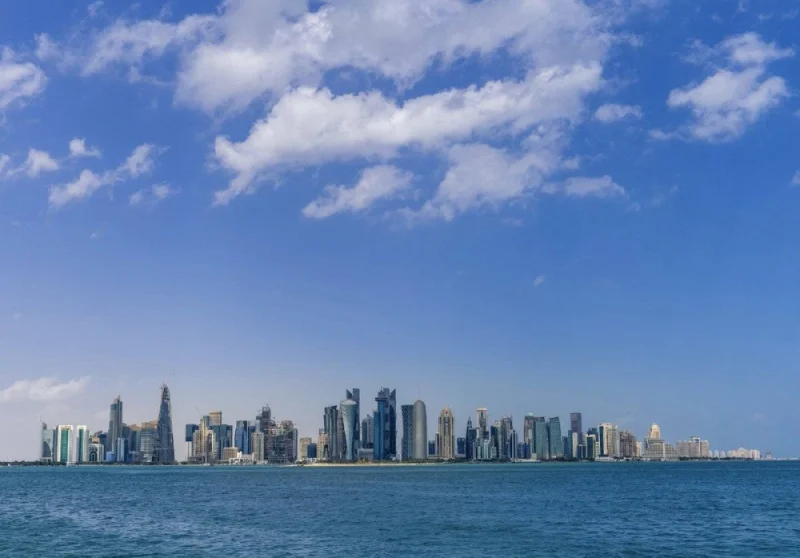Qatar's gross domestic product is set to exceed $300bn by 2028, researcher FocusEconomics said as it estimates the country’s GDP this year at $232bn.
In its latest country report, FocusEconomics estimated Qatar’s GDP at $242bn in 2025, $266bn (2026) and $289bn (2027) and $307bn (2028).
The researcher estimates GDP per capita at $79,955 this year, $83,140 (2025), $90,806 (2026), $98,148 (2027) and $103,634 (2028).
The country’s GDP growth is seen rising in 2024 from last year but remaining below the Mena average, it said.
The country’s public debt is estimated to fall consistently from this year to 2028, the researcher said.
FocusEconomics estimates public debt (as a percentage of GDP) at 39.7 this year, 37.1 (2025), 36.3 (2026), 33.7 (2027) and 32.7 (2028).
Qatar’s fiscal balance (as a percentage of GDP) has been estimated at 4.8 this year, 4.2 (2025), 5.4 (2026), 5.9 (2027) and 6.5 (2028).
The country’s current account balance (in dollar terms) has been estimated at $35.6bn this year, $35.9bn (2025), $37.7bn (2026), $43.9bn (2027) and $41bn (2028).
Current account balance (as a percentage of GDP) has been estimated at 15.3 this year, 14.8 (2025), 14.2 (2026), 15.2 (2027) and 13.4 (2028).
Unemployment (as a percentage of active population will remain at a meagre 0.2 this year and in 2025 and 0.1 until 2028.
Economic activity will be aided by increased capital outlays in the energy sector — in both renewables and fossil fuels — a growing tourism sector and improving relations with neighbouring countries. Heightened geopolitical tension in the region poses a downside risk, the report said.
FocusEconomics panellists see GDP expanding 2.3% in 2024, which is unchanged from one month ago, and expanding 3.5% in 2025.
Inflation rose to 1.6% in December from 1.3% in November. In 2024, inflation is seen declining on average from 2023 on a higher base of comparison and the lagged impact of past interest-rate hikes, FocusEconomics noted.
That said, the riyal’s peg to the dollar will add upward pressure because the latter is set to depreciate ahead.
FocusEconomics panelists see consumer prices rising 2.2% on average in 2024, which is unchanged from one month ago, and rising 2.1% on average in 2025.
The Qatar Central Bank has kept interest rates unchanged since hiking the overnight lending rate from 6.00% to 6.25% in late July, following the US Federal Reserve’s same-sized hike.
Interest rates are expected to decline in 2024 in line with monetary easing by the Fed. FocusEconomics panellists see the overnight lending rate ending 2024 at 5.25% and ending 2025 at 4.17%.
The Qatari riyal is pegged to the dollar at QR3.64. The US dollar index traded at 104 on February 2, appreciating 1.7% month on month.
The peg is likely to remain in place over our forecast horizon to 2028, given the economic stability it provides and the fact that Qatar has ample international reserves to defend it, FocusEconomics noted.
The researcher noted Moody’s recently upgraded Qatar’s credit rating one level to its third-highest investment grade — on a par with France and the UAE. In making its decision, Moody’s noted the country’s solid fiscal metrics and rising LNG production.
The economy notched a modest expansion in the first six months of 2023, FocusEconomics said. Available data suggests a similar level of performance in the third quarter; on the one hand, weaker readings for growth in energy output and construction permits will likely be offset by stronger PMI readings and visitor arrivals shooting above pre-pandemic levels.
“Turning to Q4, 2023, available data is downbeat; energy output sank at the sharpest rate since February 2022 in October and continued to fall in November, while PMI data suggests that the non-oil sector stagnated over the quarter as a whole,” the researcher said.

In its latest country report, FocusEconomics estimated Qatar’s GDP at $242bn in 2025, $266bn (2026) and $289bn (2027) and $307bn (2028).



